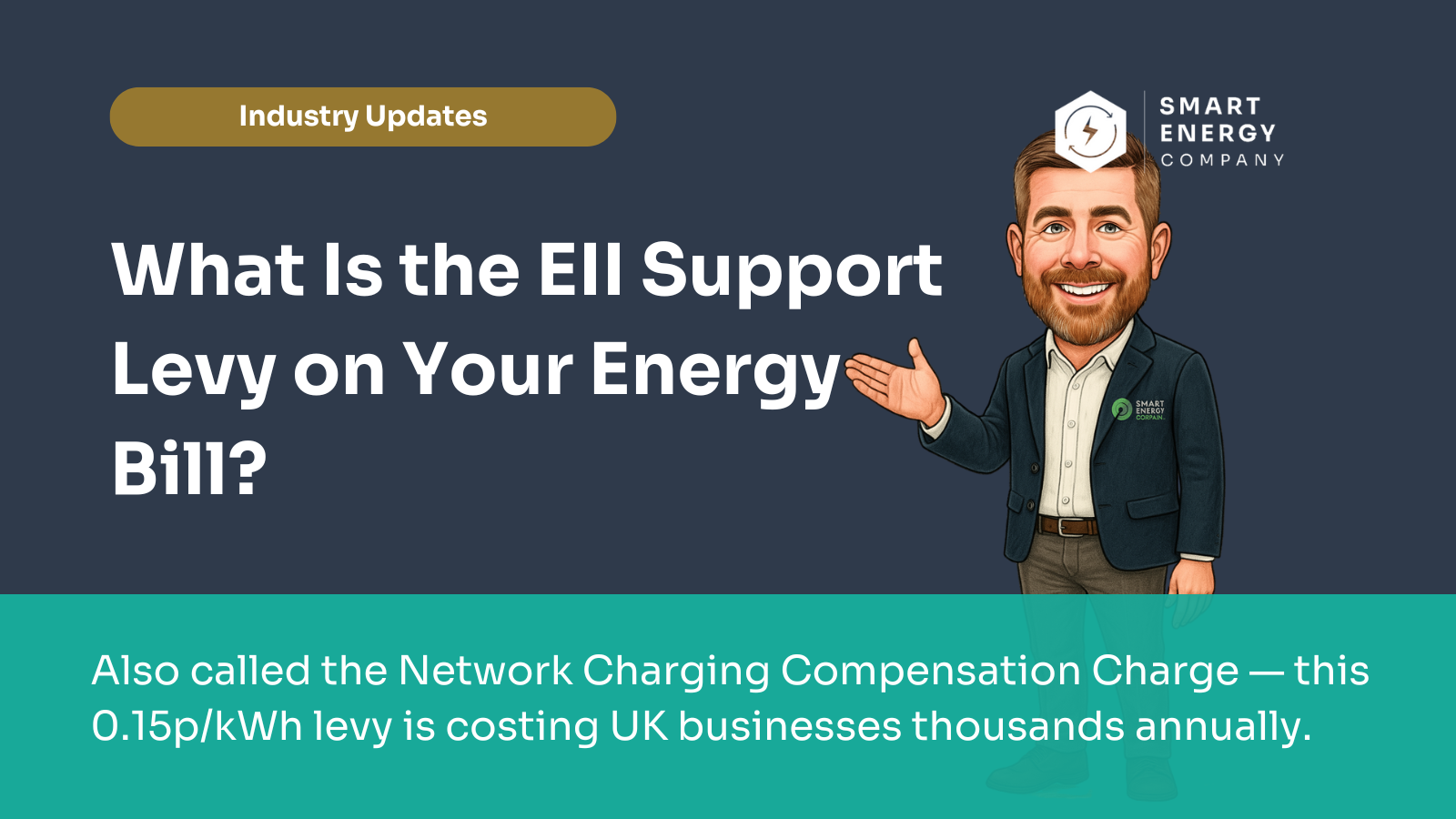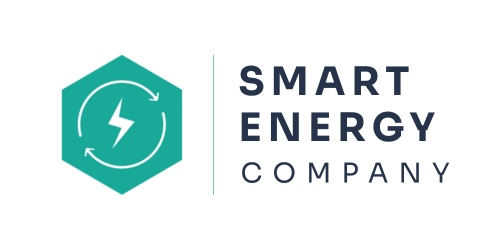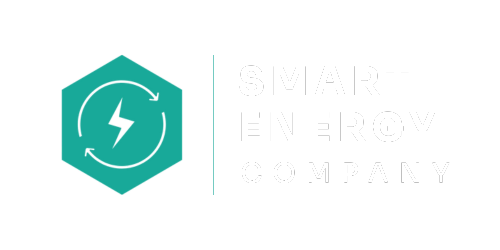EII Support Levy Explained: Why It Appears as the Network Charging Compensation Charge

If you've recently received an energy bill with a line item called "Network Charging Compensation Charge," you're not alone in being confused. This mysterious charge has left many businesses scratching their heads — and the confusing naming doesn't help.
Here's the truth: The "Network Charging Compensation Charge" and the "EII Support Levy" are the exact same thing. Different suppliers just use different names for it, which causes unnecessary confusion.
What Is This Charge?
The EII Support Levy(also called the Network Charging Compensation Charge by some suppliers) is a mandatory government levy introduced in April 2024. It funds compensation paid to Energy Intensive Industries (EIIs) for their network charges.
This charge is set by the government (BEIS/DBT) and confirmed by Elexon. Every non-EII business in the UK pays this levy through their electricity supplier — it's unavoidable and appears on all business electricity bills.
Important: This is a government-mandated levy, not a supplier markup. Your energy supplier is required by law to collect this charge and pass it on to fund the compensation scheme.
The Naming Confusion Explained
Why do different suppliers use different names for the same charge? Here's what's happening:
| Official Government Name | What Some Suppliers Call It | The Reality |
|---|---|---|
| EII Support Levy | Network Charging Compensation Charge | All refer to the same 0.15 p/kWh charge — just different labels |
| Network Charging Compensation Scheme (NCCS) — the overall programme | NCCS Levy | |
| Various supplier-specific naming variations | ||
Suppliers like Pozitive Energy, EDF, Engie, and SmartestEnergy may label it differently on invoices, but they're all charging the same government-set rate: 0.15 p/kWh.
Why the different names? Some suppliers prefer to use the scheme name (Network Charging Compensation) rather than calling it a "levy" or "tax" — probably to make it sound less like an additional charge. But make no mistake: it's the same mandatory government levy.
How It Works: The Complete Picture
Understanding the EII Support Levy requires understanding the programme it funds. Here's the relationship in plain English:
| Term | What It Is | Who Pays / Benefits |
|---|---|---|
| Network Charging Compensation Scheme (NCCS) | A government programme that compensates Energy Intensive Industries (EIIs) for a portion of their network charges (transmission, distribution, and balancing costs) | EIIs receive the benefit |
| EII Support Levy | The charge applied to all non-EII electricity consumers to fund the NCCS compensation payments | All non-EIIs pay it (via their suppliers) |
| "Network Charging Compensation Charge" | The invoice label some suppliers use for the EII Support Levy — using the scheme name instead of the levy name | Your business (if you're not EII-exempt) |
In simple terms: Energy-intensive industries get a discount on their network charges. To fund that discount, the government charges all other businesses a levy. Your business pays this levy because you're not classified as an Energy Intensive Industry.
The scheme was designed to keep UK manufacturing competitive by reducing energy costs for heavy industries like steel, chemicals, and ceramics. However, this means all other businesses must contribute to fund these rebates.
Real Invoice Example
Here's an actual invoice from Pozitive Energy showing this charge:
Tariff Services: NETWORK CHARGING COMPENSATION CHARGE
Quantity: 83,722 kWh
Rate: 0.1500 p/kWh
Total: £125.58
Let's break this down:
- The rate of 0.15 p/kWh exactly matches the government-set EII Support Levy rate
- The charge applies to total consumption(83,722 kWh in this example)
- It's a separate line item — some suppliers include it in the main bill, others send a separate invoice
- The calculation is straightforward: 83,722 kWh × £0.0015/kWh = £125.58
Separate invoices: Some businesses are receiving this charge on a completely separate invoice that covers the entire year (April to March). Don't be alarmed — this is just an administrative choice by the supplier. The charge itself is still the same mandatory levy.
Who Pays This Charge?
Almost every business electricity customer in the UK pays this levy. The only exceptions are businesses that qualify as Energy Intensive Industries under the government scheme.
You pay the EII Support Levy if:
- You're a standard commercial or industrial electricity customer
- You don't qualify as an Energy Intensive Industry
- Your business doesn't have EII exemption certification
What qualifies as an Energy Intensive Industry? These are typically large manufacturing operations in specific sectors including:
- Steel and metal production
- Chemicals and pharmaceuticals
- Ceramics and glass manufacturing
- Paper and pulp production
- Cement manufacturing
If you're not in one of these sectors and haven't been certified as EII-exempt, you'll see this charge on your bills.
Can you avoid this charge? No. The EII Support Levy is mandatory for all non-EII businesses and is set by government regulation. Switching suppliers won't eliminate it — you'll still pay 0.15 p/kWh regardless of which supplier you choose.
Frequently Asked Questions
What Should You Do?
If you've received this charge on your bill, here's your action plan:
- Verify the calculation: Check that your consumption figure is accurate and the rate is 0.15 p/kWh
- Understand it's mandatory: This is a government levy, not a supplier markup or discretionary charge
- Factor it into your budget: This charge will appear on all future bills, so include it in your energy cost projections
- Review your energy strategy: Since you can't avoid the levy, focus on reducing overall consumption to minimize the charge
Think you might qualify for EII exemption?
If your business operates in energy-intensive manufacturing, you may be eligible for relief from this levy through EII certification. Learn more about eligibility requirements and the application process:
More Energy Cost Increases Coming in 2026
The EII Support Levy is just one of several government-mandated charges hitting business energy bills. Unfortunately, more increases are on the horizon:
TNUoS Standing Charge
Transmission Network Use of System charges are increasing by an average of 94% in April 2026, adding significant costs to your standing charges.
Read more →Nuclear RAB Levy
A new levy of 0.3455 p/kWh starting 1st November 2025 to fund nuclear power station construction, adding another layer to your energy costs.
Read more →EII Support Levy
The current levy you're reading about - already adding costs to every kWh you consume since April 2024.
Combined Impact: Nuclear RAB + EII Support Levy = 0.4955 p/kWh
From 1st November 2025, businesses will be paying both levies simultaneously - that's nearly half a penny on every single kWh you use, before you even factor in your actual energy costs.
How Much Will These Levies Cost Your Business?
Use the slider below to see the annual cost impact of the combined Nuclear RAB Levy (0.3455 p/kWh) and EII Support Levy (0.15 p/kWh) on your business.
Important: This is on top of your unit rates, standing charges, and other network costs. These government levies are unavoidable - but you can control your unit rates by securing a competitive contract.
Lock In Competitive Rates Before More Increases Hit
While you can't avoid government levies and charges, you can control your unit rates and supplier costs. Get a free quote today and ensure you're not overpaying on the charges within your control.
✓ No obligation ✓ Compare top suppliers ✓ Expert guidance on avoiding cost increases
Explore More Energy Insights
Stay informed with the latest market updates, supplier news, and industry changes affecting your business
Read our latest energy market insights and expert analysis
Your weekly energy market summary and price movements
Comprehensive monthly energy market trends and forecasts
Current deemed rates and how to avoid expensive bills
Latest news from UK energy suppliers and market changes
Important regulatory and industry updates for businesses
Found This Helpful?
Share this insight with your business network


